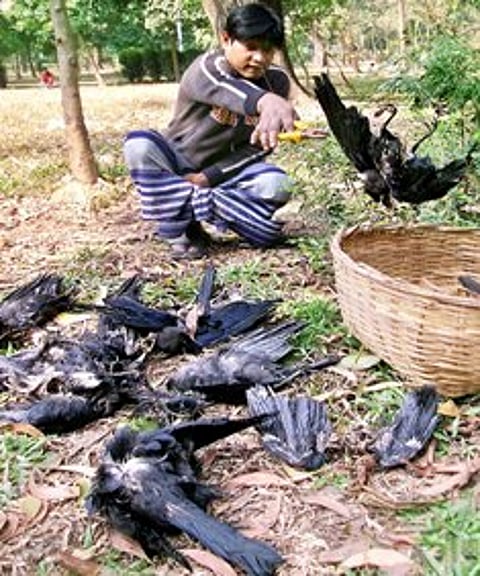After the cull
East of the Bangladesh border with West Bengal, 26 kilometres from Dinajpur, villagers in Khodshippur and Ratnur are finding it increasingly difficult to make ends meet. Starting on 26 January, the Dhaka government frantically called for the massive slaughtering of backyard stocks of chickens and ducks, in this area and elsewhere. Since then, in the middle of the night, national culling committees, with help of local labour, have searched affected villages for chickens and ducks – collecting the birds, twisting their heads, and burying them underground beneath a layer of lime. In less than a month, 700,000 chickens have been killed in this way.
The current avian-influenza outbreak has wreaked havoc on one of Bangladesh's most important sectors, the poultry industry, upon which roughly 60 percent of the country's population depends, in one form or another. On 22 January, the news broke that multiple outbreaks were taking place in both Bangladesh and India; over the course of the following two weeks, more than 450,000 chickens were killed in 38 out of Bangladesh's 64 districts, particularly in northwestern border areas abutting West Bengal. By the first week of February, the virus had reached urban areas in Dhaka and Chittagong, where hundreds of dead, infected crows were suddenly being found on the streets (see pic). Given the high human population densities in these areas, the longstanding fears of a looming pandemic mounted.

